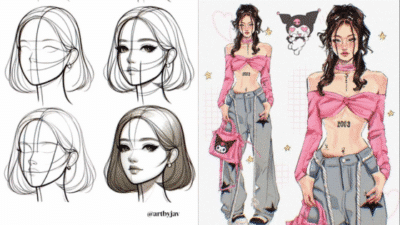Equine drawings capture the beauty and strength of horses through art. They allow artists to show the animal’s movement, form, and spirit in ways photos often can’t. Whether it’s a quick sketch or a detailed pencil drawing, these artworks connect people with horses on a deeper level.
The key to great equine drawings is understanding a horse’s anatomy and motion, which helps make the image feel alive and real. Many artists focus on details like muscle shapes and the flow of a horse’s mane to bring their drawings to life.
Fans of equine art come from all walks of life. Some enjoy simple line drawings, while others prefer detailed portraits or action shots that show horses running or jumping. This variety makes equine drawing a fun and rewarding subject for both new and experienced artists.
Understanding Equine Drawings
Equine drawings capture the beauty and strength of horses through careful observation and skill. Artists focus on the horse’s structure, history in art, and various illustration styles to bring these animals to life on paper.
History of Equine Art


Horses have been shown in art for thousands of years, dating back to ancient cave paintings. They were often important in human culture for work, travel, and war, which made them popular subjects.
In medieval times, horses appeared in tapestries and illuminated manuscripts. Later, artists in the Renaissance studied horse anatomy closely to create more lifelike images. The 18th and 19th centuries saw detailed horse portraits focusing on breed and movement.
Throughout history, the role of horses in society shaped how artists drew them. Their strength and grace made them symbols of power, freedom, and beauty in many cultures.
Key Elements of Horse Anatomy


Understanding horse anatomy is essential for accurate drawings. The skeleton includes strong legs, a long neck, and a sturdy body, which help support its weight and movement.
Muscles show through the skin in certain areas, like the shoulders and haunches, giving horses their shape and power. Learning these muscle groups helps artists create realistic poses.
The horse’s head has distinct features: a broad forehead, large eyes, and flared nostrils. Capturing these details is important for expressions and character.


Basic anatomy to study:
- Skull shape and jawline
- Neck connection to shoulders
- Leg joints and hoof shape
- Muscle groups across the body
Popular Styles of Equine Illustration


There are many ways to draw horses, each with its own focus and style. Realistic drawings aim for detailed proportions and textures, showing muscles and bone clearly.
Some artists use loose sketches to capture the horse’s movement quickly. These can be simple lines or shapes that express energy and gesture.
Others work with painting techniques, adding color and light to create mood. Some illustrations mix styles, like adding abstract backgrounds or stylized features.


Common styles include:
- Detailed anatomical studies
- Quick gesture sketches
- Watercolor or oil paintings
- Stylized or cartoon-like renderings
Each style serves a purpose, from learning horse structure to telling a visual story.
Techniques and Materials
Drawing horses well takes the right tools and careful attention to shape and detail. Understanding how to sketch horses in motion and add depth with shading helps bring the image to life.
Essential Drawing Tools for Horses


Artists often start with basic pencils ranging from hard (H) to soft (B). Hard pencils create fine lines, good for outlining, while soft pencils add darker tones and shading.
Other useful tools include:
- Erasers: Kneaded erasers for gentle lifting and regular erasers for clean removal.
- Blending stumps: Help smooth out pencil marks and create soft shadows.
- Paper types: Smooth paper works well for detailed lines; textured paper enhances shading effects.
Some artists use charcoal for deeper contrast, and colored pencils or watercolors to add color. The choice depends on the style and effect desired.
Sketching Dynamic Poses


Capturing horses in motion means studying their anatomy and movement. Artists often start with simple shapes like circles and ovals to map the body and joints.
It helps to observe photos or live horses to understand how legs, neck, and muscles move during walking or running. Quick gesture sketches can capture energy and flow.
Focusing on the horse’s balance and weight transfer makes poses feel lifelike. Lines should be loose but deliberate, showing both strength and grace.
Shading and Adding Texture
Shading gives a horse drawing volume and realism. Artists layer pencil strokes to show muscle curves, shadows under the belly, and light on the coat.
Using varied pressure with the pencil creates differences between dark shadows and light areas. Blending tools soften harsh lines, while small, controlled strokes can mimic fur texture.
Texture changes on the mane and tail, which often require longer, flowing strokes. Paying attention to light sources helps decide where to place highlights and deeper darks for a natural look.
Inspiration and Creating Original Equine Art
Creating equine drawings starts with gathering good visual sources and blending what an artist sees with their own ideas. The process also involves deciding how to balance true details with personal style. Finally, artists think about the best ways to share their work.
Finding Reference Images


Artists need clear and accurate photos or real-life views to capture a horse’s shape, muscles, and movement. Photos from different angles help show details like the curve of the neck or the way light hits the mane. Videos can be useful to study how horses move and behave in natural settings.
It’s important to choose images that show the horse’s character. This helps the drawing feel alive, not just like a copy. Artists may also use multiple pictures to combine different poses, markings, or backgrounds.
Using reference images provides a strong base, but artists should avoid relying solely on them to keep the art fresh and original.
Combining Realism with Creativity


Equine art often mixes accurate shapes with artistic touches. Realism means getting proportions and anatomy right. Creativity comes in with styles like bold colors, loose brush strokes, or imaginative backgrounds.
Artists might highlight certain horse features, like the expressive eyes or flowing mane, to bring emotion to the drawing. Some add unique patterns or abstract details to make the piece stand out.
Balancing realism and creativity helps the artwork connect with viewers. It shows expertise and personality at the same time.
Showcasing Your Equine Drawings


Sharing equine art begins with choosing the right format. Originals, prints, and digital versions each have their uses. Prints allow more people to enjoy the work, while originals carry personal value.
Artists often display their drawings in galleries, online stores, or social media. Clear lighting and good framing can improve presentation. Descriptions that explain the story or inspiration behind the art can make it more meaningful to viewers.
Using platforms popular with horse lovers helps find the right audience. Engaging with others who appreciate equine art can lead to feedback and new opportunities.
- 506shares
- Facebook0
- Pinterest505
- Twitter1


